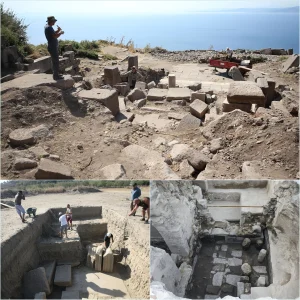In a recent exploration of the depths of the Mediterranean Sea, archaeologists have uncovered new “hidden treasures” from a 2,000-year-old shipwreck, shedding light on this ancient maritime mystery. The expedition, centered on the renowned Antikythera shipwreck in the Aegean Sea near Greece, was detailed in a press release by the Swiss School of Archaeology in Greece (ESAG) on Monday.

“This is unquestionably a unique shipwreck from antiquity,” emphasized University of Geneva professor Lorenz E. Baumer in an interview with Fox News Digital. The sunken vessel, dating between 80 and 60 B.C., is described as “the richest [ancient trade ship] ever discovered in the Eastern Mediterranean” by Baumer, who believes it originated in the Eastern Mediterranean and was likely en route to Rome before sinking. “We can gain valuable insights about markets and maritime cargoes during the 1st century B.C. from it.”

During the recent dive, approximately 300 artifacts were unearthed, including fragments of marble statues, suggesting a valuable cargo lost at sea. According to ESAG, “The marble fragments discovered indicate the presence of multiple statues,” while amphorae analysis revealed diverse types, including those from Chios and Rhodes.

Intriguingly, a second shipwreck was found about 650 feet from the Antikythera wreck, prompting ongoing investigation into whether the two vessels were traveling together.
The Antikythera shipwreck, initially discovered in 1900, has long captured global fascination, notably for yielding the Antikythera mechanism, a remarkably intricate mechanical device recovered in 1901. This artifact remains one of the oldest known computational instruments.
While previous studies focused primarily on the ship’s artifacts, Baumer’s team aims to comprehensively understand the shipwreck and its remains.





